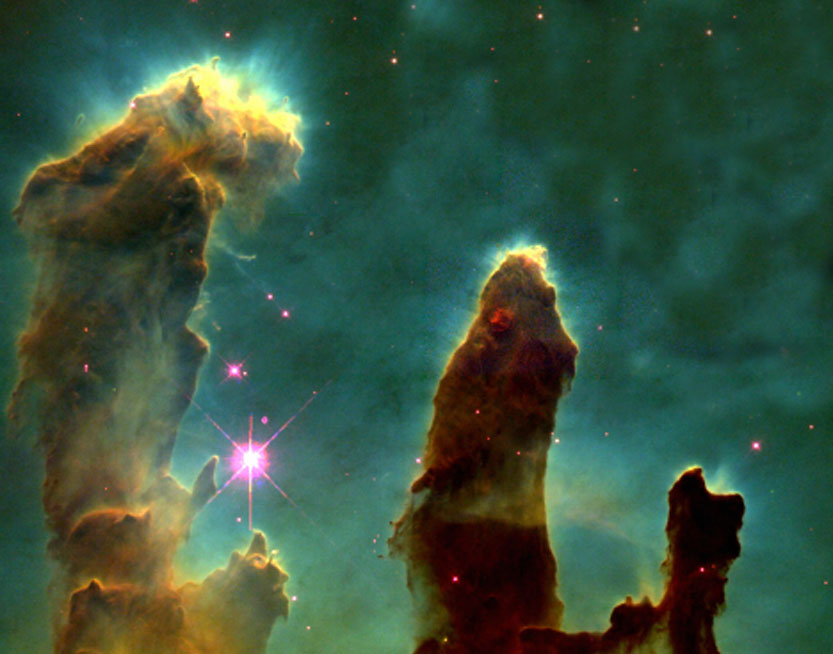MESSENGER
By Evan FinnesOn October 6th the MESSENGER spacecraft will perform a Mercury flyby for the second time this year. MESSENGER (MErcury Surface, Space, Environment, GEochemistry and Ranging) will fly past Mercury at an altitude of 201 km while taking over 1200 images of the cratered surface.
The spacecraft made its first flyby on Jan 14th, during which it took over 1200 photos, and made several startling discoveries. Some of which demonstrated that the innermost planet is not as similar to the Earth’s Moon as once was believed. MESSENGER photographed craters which are very different from the craters on the Moon. For instance, the Caloris basin is a crater with a diameter of approximately 1545km. The floor of this crater has a surface which is more reflective than the material surrounding the crater. This is exactly opposite of the Moon, whose crater floors are darker than the surrounding material. MESSENGER also observed that Mercury’s magnetic field has changed since it was first observed by Mariner 10. MESSENGER also observed large cliffs which contain ancient faults, these faults act as a recording of the paleotectonics which occurred early in the planets history. MESSENGER also observed the mineral makeup of the planet’s surface, and discovered sodium and hydrogen in the planets exosphere.
On March 18th 2011 MESSENGER will enter Mercury’s orbit where it will gather data for an entire year. MESSENGER hopes to answer several questions. The first question: “Why is Mercury so dense?” Mercury has a density of 5.427g/cm3 which implies that the mass of mercury’s core accounts for 60% of the planets total mass. MESSENGER will gather mineralogical and compositional data to help determine why. Like on Earth, part of this core must be liquid if it is to have the dynamo necessary to generate a magnetic field.
Question 2: “What is the geologic history of Mercury?” MESSENGER will photograph and observe the planet in great detail in an attempt to better understand the processes which have shaped the planet. Specifically areas such as the faults observed on the large cliffs I described earlier. Because Mariner 10 was only able to observe 45% of the planet’s surface, MESSENGER is sure to discover more geologic splendors.
Question 3: “Is there water on Mercury?” Some of the permanently shadowed craters on Mercury’s poles contain a highly reflective material that could be ice. Mercury is the closest planet to the Sun, but it also has the largest daily temperature gradient of the terrestrial planets. Surface temperatures range from -83°C to 427°C, with the coldest temperatures recorded at the bottom of the polar craters.
MESSENGER will not begin collecting this exciting data for a couple more years, but it is sure to tease with some good photographs and interesting data while we wait. The second flyby is scheduled for next week and a third a third and final flyby is scheduled for September 28th 2009.
